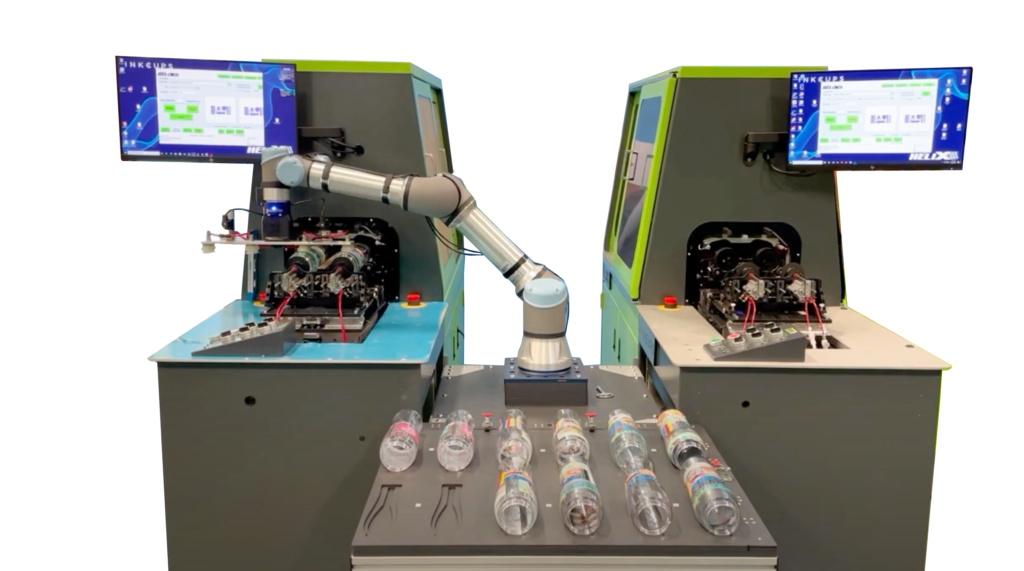Inkcups’ Mechanical Engineer, John Ozirsky sat down to answer some of the most frequently asked questions when it comes to our automation capabilities.
- Equipment
- Inks & Supplies
- Services
- Applications
- Tagless
- Resources
- About Us
- Contact Us

Inkcups’ Mechanical Engineer, John Ozirsky sat down to answer some of the most frequently asked questions when it comes to our automation capabilities.
Q. What are the output speeds?
A. The automation systems have the capability to keep up with the fastest print times on the Helix® and Double Helix®! We set up a system feeding two Double Helix® loading and unloading the parts to a pallet at a 20 second cycle time. The exact cycle time will be application specific. Having a robot feed one versus two machines will affect the productivity. Additionally, the feeding system will have an impact on cycle time – a streamlined conveyor system will be more productive than a palletizing operation. Please inquire with Inkcups Engineering for more details.
Q. What application would be best to highlight for automation?
A. The automation systems are designed to handle all types of material and form. Pair up with the NPC for streamlined printing of transparent parts or ArtPrep® for single piece workflow.
Q. What are the weight restrictions?
A. The robotic arms are designed to carry a payload up to 5 kg (11 lbs). Parts at the high end of that range will need slower movement speeds. It is also advised that heavier parts that could pose a safety risk if dropped are handled with the mechanical gripping system.
Q. What customizations are available?
A. The robots are built to be adaptable and come with a wide range of options from conveyor connections to barcode scanning. The software communication between the robot and Helix allows for cool features like discarding rejected parts and more.
Q. What does no caging mean?
A. One of the main selling points between co-bots and industrial robots is the necessity (or lack of) a safety system or caging. The majority of co-bot deployments don’t require any additional guarding due to their ability to sense if a crash has occurred and stop motion. This is not a universal rule, and a risk assessment should always be completed to see what is appropriate for your specific application. Industrial robots do not have the ability to sense if a crash has occurred, increasing their safety risk. All industrial robot deployments should have additional safety equipment, whether that is physical barriers, light curtains, or safety scanners.
Add Your Comment